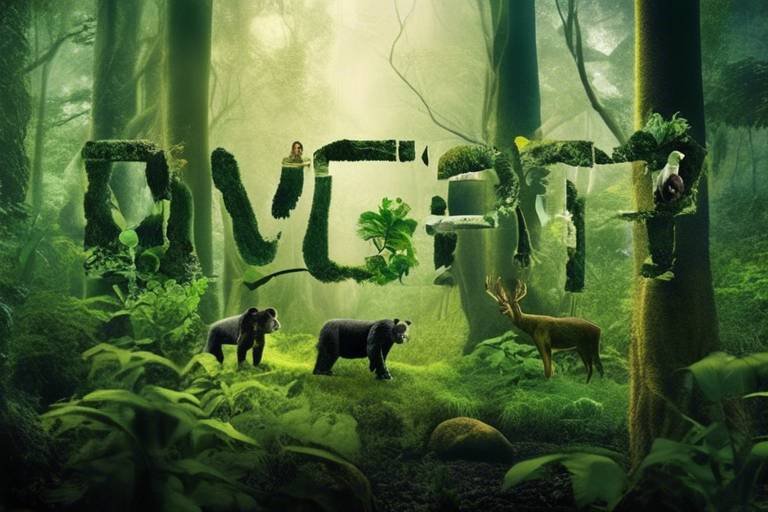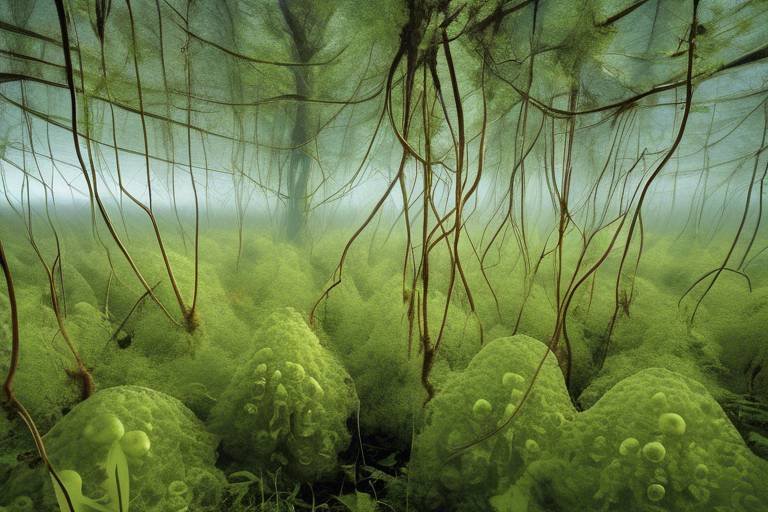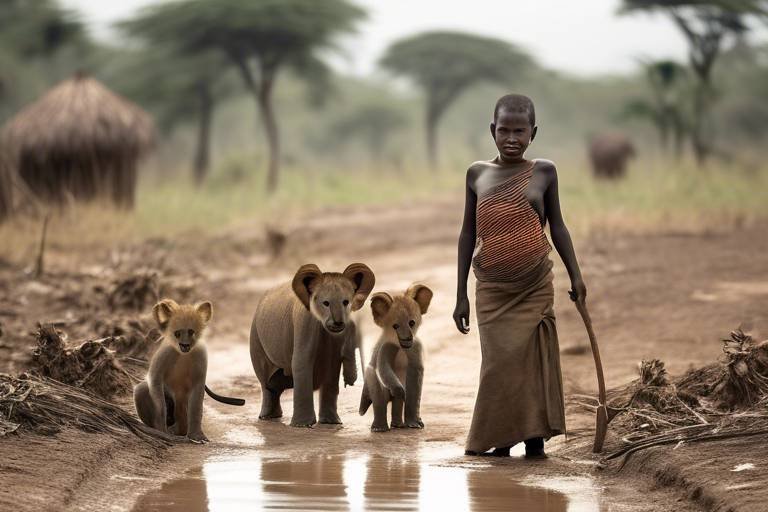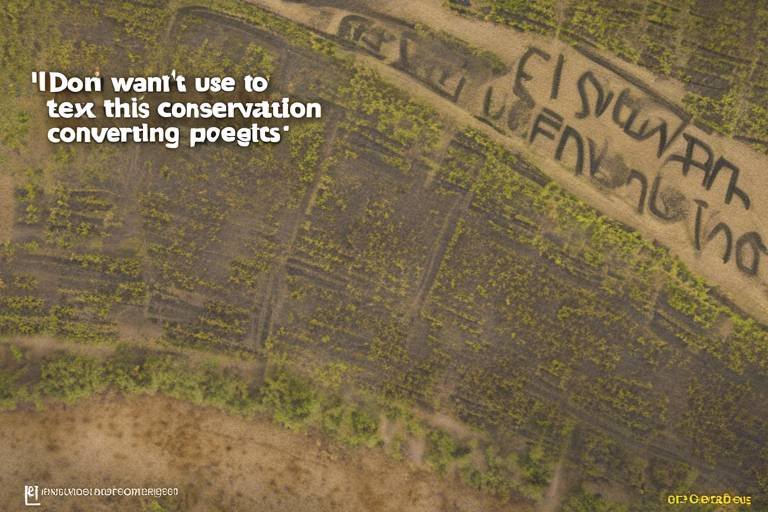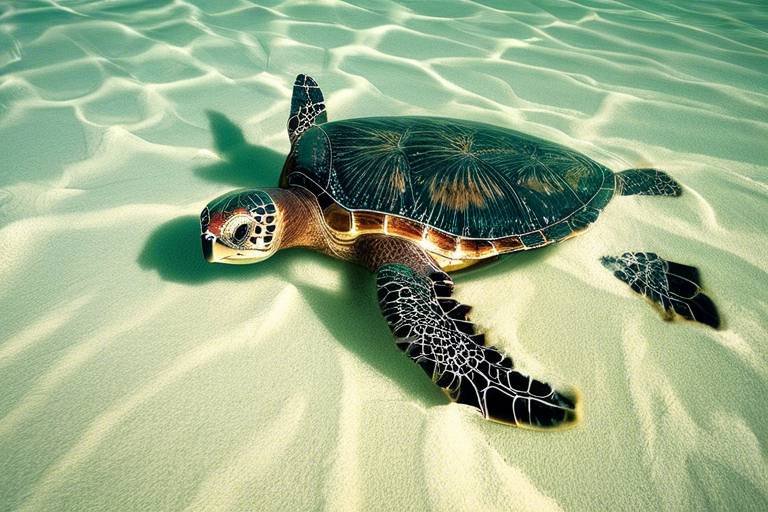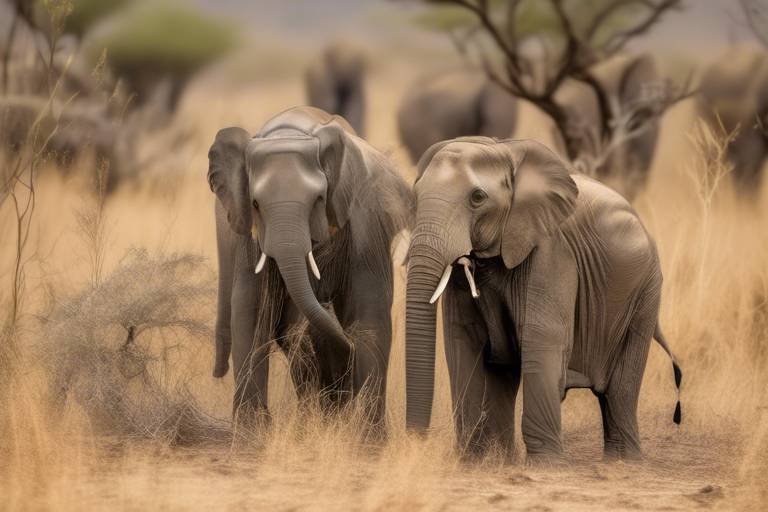Can We Measure the Success of Conservation Efforts?
When we think about conservation efforts, what comes to mind? Is it the majestic return of a once-endangered species, or perhaps the lush greenery of a restored habitat? Measuring the success of these initiatives is not just a matter of counting animals or assessing land; it’s about understanding the impact these efforts have on our planet and its biodiversity. In essence, we are embarking on a quest to quantify something that is often deeply qualitative—our connection to nature and the health of ecosystems.
But how do we go about measuring success in conservation? The reality is that there is no one-size-fits-all answer. Success can be defined in myriad ways, depending on who you ask. For some, it might mean the revival of a species once on the brink of extinction, while for others, it could be the restoration of a habitat that supports an entire ecosystem. It's like trying to measure the success of a symphony—each instrument plays its part, but the beauty lies in the harmony they create together.
In this article, we will explore various methods and metrics used to assess the effectiveness of conservation initiatives, highlighting both the challenges and the remarkable successes. From the quantitative data of population recovery rates to the qualitative insights gained from community involvement, we will delve into the multifaceted world of conservation metrics. So, buckle up as we embark on this enlightening journey to uncover whether we can truly measure the success of conservation efforts!
Understanding what constitutes success in conservation is crucial. This section outlines different definitions and perspectives on successful conservation outcomes, ranging from species recovery to habitat preservation. Success in conservation can often feel like a moving target, influenced by changing environmental conditions, socio-economic factors, and even political will. For instance, while one project may celebrate the return of a species, another might focus on the restoration of wetlands that support countless organisms. It’s essential to recognize that success is often contextual and can vary widely from one initiative to another.
Various metrics can be employed to evaluate conservation efforts. This section discusses quantitative and qualitative measures, including population trends, habitat quality, and ecosystem resilience. To truly gauge the effectiveness of conservation strategies, we must look beyond mere numbers. While statistics like population recovery rates provide valuable insights, they must be complemented by qualitative assessments that consider the broader ecological context. For example, the health of a habitat can be assessed through indicators such as biodiversity levels, soil quality, and water purity.
Population recovery rates serve as a primary indicator of conservation success. This subsection examines how tracking species populations can provide insights into the effectiveness of specific conservation strategies. Imagine a once-dwindling population of sea turtles, now flourishing thanks to concerted conservation efforts. By monitoring their numbers over time, we can determine whether interventions, such as protected nesting sites or reduced fishing bycatch, are making a tangible difference. This data not only helps in assessing success but also informs future conservation strategies.
Analyzing successful case studies offers valuable lessons. This part highlights notable examples where targeted conservation efforts led to significant population rebounds of endangered species. For instance, the recovery of the California condor is a testament to what focused efforts can achieve. Once teetering on the edge of extinction, intensive breeding programs and habitat protection have helped increase their numbers from just 27 individuals in the 1980s to over 500 today. Such stories are not just numbers; they are reminders of what is possible when we commit to conservation.
Monitoring populations presents challenges, including funding and methodology. This section addresses the difficulties faced in accurately tracking species numbers and health over time. Despite the success stories, the road to effective population monitoring is fraught with obstacles. Financial constraints can limit the scope and duration of studies, while varying methodologies can lead to inconsistent data. Furthermore, some species are elusive, making them hard to track. Thus, while we strive for accuracy, we must also navigate these challenges with innovative solutions and community collaboration.
Habitat restoration is a vital aspect of conservation. This subsection discusses how evaluating restored habitats can indicate the overall success of conservation projects. Think of habitat restoration as a puzzle; each piece must fit perfectly for the picture to be complete. Evaluating the success of these projects involves looking at various factors, including the return of native flora and fauna, soil health, and water quality. Successful restoration not only benefits individual species but also enhances the resilience of entire ecosystems, making them more robust against climate change and other pressures.
Community engagement plays a pivotal role in conservation success. This section explores how involving local populations and educating them can enhance the effectiveness of conservation initiatives. Have you ever noticed how passionate locals can be about their environment? When communities are involved in conservation, the outcomes are often more sustainable and impactful. Education empowers individuals to take ownership of their natural resources, fostering a sense of responsibility and connection to the land.
Utilizing local knowledge can improve conservation strategies. This part emphasizes the importance of incorporating indigenous and community insights into conservation planning. Local communities often possess a wealth of knowledge about their ecosystems, having lived in harmony with nature for generations. By integrating this knowledge into conservation strategies, we can create more effective and culturally relevant initiatives that resonate with the people who depend on these resources.
Education programs can foster a conservation ethic. This subsection examines the effectiveness of educational initiatives in promoting awareness and participation in conservation efforts. Programs that teach children about biodiversity and the importance of conservation create a ripple effect, instilling values that can last a lifetime. When individuals understand the significance of their actions on the environment, they are more likely to engage in sustainable practices, further contributing to conservation success.
- What are the main indicators of conservation success? Indicators include population recovery rates, habitat quality, and community involvement.
- How can local communities contribute to conservation efforts? Local communities can provide valuable knowledge, participate in restoration projects, and promote sustainable practices.
- What challenges do conservationists face? Challenges include funding limitations, methodological inconsistencies, and the elusive nature of some species.
- Why is education important in conservation? Education fosters awareness and encourages individuals to take part in conservation efforts, creating a more informed public.

Defining Conservation Success
When we talk about conservation success, it’s essential to realize that this concept isn’t one-size-fits-all. In fact, it can be as multifaceted as the ecosystems we strive to protect. To put it simply, conservation success can be defined in various ways, depending on who you ask. Some people might argue that success is all about the recovery of endangered species, while others may focus on the preservation of habitats or the restoration of ecological balance. So, what does it really mean to succeed in conservation?
One popular perspective is that conservation success hinges on species recovery. This means that if a population of a previously endangered species begins to flourish, we can celebrate that as a victory. Think of it like a sports team that has been struggling for years but finally makes it to the playoffs. It’s a moment of triumph! However, this viewpoint can be limiting. After all, a species might be recovering, but if its habitat is still under threat, can we truly call that a success?
Another angle to consider is habitat preservation. In this view, the focus is on maintaining the natural environments that support various species, even if those species aren’t currently endangered. Imagine a beautiful park that’s been around for generations. If we can keep it intact and thriving, we’re not just saving one species; we’re protecting a whole community of life. This broader perspective emphasizes that conservation is not just about individual species but the complex web of life they are part of.
Moreover, we can't overlook the importance of ecosystem resilience. This concept refers to the ability of an ecosystem to recover from disturbances, whether they be natural disasters or human activities. Think of it like a rubber band: the more resilient it is, the more it can stretch and bounce back without breaking. A resilient ecosystem can weather storms—literally and figuratively—making it a crucial aspect of conservation success.
In summary, defining conservation success is a complex challenge that requires us to consider multiple perspectives. It’s about finding a balance between species recovery, habitat preservation, and ecosystem resilience. By taking a holistic approach, we can set more comprehensive goals and strategies that align with the intricate realities of our natural world. So the next time you hear someone shout “Success!” in conservation, ask them – success for whom and for what?

Key Metrics for Assessment
When it comes to evaluating the success of conservation efforts, metrics are our guiding stars. They help us navigate the complex landscape of biodiversity and ecosystem health. But what exactly are these metrics, and how do we use them to assess our conservation initiatives? Well, let’s dive into the world of quantitative and qualitative measures that provide us with a clearer picture of our progress.
At the heart of conservation assessment are several key metrics that can be grouped into two main categories: population trends and habitat quality. Each of these metrics offers unique insights into the effectiveness of conservation strategies. For instance, tracking population trends can reveal whether a species is thriving or declining, while assessing habitat quality can indicate whether the environment is suitable for various species to flourish.
One of the most significant metrics is the population recovery rate. This metric allows conservationists to measure how quickly a species is bouncing back from the brink of extinction. By monitoring changes in population numbers over time, we can gauge the success of specific interventions, such as breeding programs or habitat protection. However, it’s essential to recognize that a single number doesn’t tell the whole story. For a comprehensive assessment, we need to consider various factors, including the age structure of the population, genetic diversity, and reproductive success.
Population recovery rates serve as a primary indicator of conservation success. Imagine a once-thriving forest that has seen its wildlife dwindle to a mere fraction of its former glory. By tracking species populations, we can uncover valuable insights into the effectiveness of specific conservation strategies. For example, when we see a steady increase in the number of a particular species, it’s a strong indicator that our efforts are paying off. However, if numbers remain stagnant or continue to decline, it signals the need for a reevaluation of our approach.
Analyzing successful case studies offers valuable lessons. For instance, the recovery of the California condor is a remarkable example. Once on the brink of extinction, intensive conservation efforts, including captive breeding and habitat restoration, have led to a population resurgence. This case not only highlights the importance of targeted interventions but also serves as a beacon of hope for other endangered species.
However, monitoring populations presents its own set of challenges. Funding constraints often limit the scope of research, making it difficult to gather comprehensive data. Additionally, the methodologies used for tracking species numbers can vary significantly, leading to inconsistencies in the data collected. Factors such as habitat accessibility, seasonal variations, and even the behavior of the species in question can complicate monitoring efforts. To overcome these challenges, conservationists must employ innovative technologies and collaborate with local communities to ensure accurate tracking of species numbers and health over time.
In addition to population metrics, assessing habitat restoration success is crucial. When we restore a habitat, we’re not just planting trees or removing invasive species; we’re creating a thriving ecosystem. Evaluating restored habitats can indicate the overall success of conservation projects. Metrics such as biodiversity indices, soil health, and water quality can provide essential insights into the effectiveness of habitat restoration efforts. Ultimately, a healthy habitat supports a diverse array of species, making it a vital component of successful conservation.
In conclusion, the key metrics for assessing conservation efforts are multifaceted and interconnected. By focusing on population trends and habitat quality, we can gain a deeper understanding of our progress and the challenges we face. As we continue to refine our methods and embrace innovative technologies, we move closer to ensuring a sustainable future for our planet's precious biodiversity.
- What are the most important metrics for measuring conservation success? The key metrics include population recovery rates, habitat quality assessments, and biodiversity indices.
- How can local communities contribute to conservation efforts? Local communities can provide invaluable knowledge and support, helping to tailor conservation strategies to the specific needs of the ecosystem.
- Why is monitoring populations challenging? Challenges include limited funding, inconsistent methodologies, and factors affecting species behavior and habitat accessibility.
- What role does education play in conservation? Education fosters awareness and participation, empowering individuals to engage in conservation efforts and advocate for sustainable practices.

Population Recovery Rates
When we talk about conservation success, one of the most telling indicators is the population recovery rate. This metric essentially measures how well a species is bouncing back from the brink of extinction or severe decline. Imagine a once-thriving forest teeming with life, now reduced to a mere shadow of its former self. The ability of species to repopulate their habitats is akin to a phoenix rising from the ashes. It’s not just about numbers; it’s about the health and vitality of ecosystems.
Tracking population recovery involves a variety of methods, including field surveys, remote sensing, and genetic analysis. Each of these methods provides a different lens through which we can view the success of conservation strategies. For example, when assessing how a specific animal species is recovering, researchers might look at factors such as:
- Population Size: How many individuals are currently in the wild?
- Reproductive Rates: Are the species producing enough offspring to sustain and grow their populations?
- Genetic Diversity: Is there enough genetic variation to ensure long-term survival?
By examining these factors, conservationists can determine whether their efforts are truly making a difference. For instance, if a species like the California condor shows a steady increase in population due to breeding programs and habitat protection, it's a clear sign that targeted conservation strategies are working.
However, it’s essential to remember that recovery is not always linear. Some species may experience fluctuations due to environmental changes, disease outbreaks, or human interference. Therefore, long-term monitoring is crucial. Consider the case of the grey wolf in Yellowstone National Park. After being reintroduced in 1995, their population initially surged, but various factors—including competition and climate change—have caused ups and downs in their numbers. This highlights the complexity of population dynamics and the need for adaptive management strategies.
| Species | Initial Population | Current Population | Recovery Rate (%) |
|---|---|---|---|
| California Condor | 27 | 500 | 1,748 |
| Grey Wolf | 1,000 | 6,000 | 500 |
| Eastern Black Rhinoceros | 2,410 | 5,000 | 107 |
This table illustrates just a few examples of how various species have rebounded due to effective conservation measures. The recovery rates are not just numbers; they represent the hard work of conservationists and the resilience of nature. Yet, we must also recognize the challenges that lie ahead. For every success story, there are numerous species still struggling for survival. Hence, continuous research and adaptive management are vital to ensure that we don't lose sight of our conservation goals.
In conclusion, understanding population recovery rates is essential for evaluating the success of conservation efforts. They not only provide a quantitative measure of success but also help us to identify what strategies are working and what needs to be adjusted. As we continue to face the challenges of biodiversity loss and habitat destruction, these metrics will guide us in making informed decisions to protect our planet's precious wildlife.
Q: What is a population recovery rate?
A: The population recovery rate measures how well a species is rebounding from decline or extinction, indicating the effectiveness of conservation efforts.
Q: How is population recovery measured?
A: It can be measured through various methods, including field surveys, reproductive rates, and genetic diversity assessments.
Q: Why is long-term monitoring important?
A: Long-term monitoring helps track fluctuations in populations due to environmental changes and ensures adaptive management strategies are in place.

Case Studies in Population Recovery
When it comes to understanding the success of conservation efforts, provide invaluable insights. These real-world examples not only highlight the effectiveness of various conservation strategies but also serve as a beacon of hope and motivation for future initiatives. Let's dive into some notable case studies that showcase how targeted efforts can lead to significant rebounds in endangered species populations.
One of the most celebrated examples is the recovery of the California Condor. Once on the brink of extinction in the 1980s, with only 27 individuals left in the wild, concerted conservation efforts, including captive breeding and habitat protection, have led to a population exceeding 500 today. This remarkable turnaround demonstrates the power of dedicated action and the importance of ongoing monitoring and management.
Another compelling case is that of the Gray Wolf in Yellowstone National Park. After being eradicated from the area in the early 20th century, wolves were reintroduced in 1995. The positive ripple effects on the ecosystem were profound, leading not only to an increase in the wolf population but also to the recovery of various other species and the restoration of ecological balance. This example underscores how the recovery of a single species can have a far-reaching impact on the entire ecosystem.
Similarly, the Eastern Black Rhinoceros serves as a testament to the effectiveness of anti-poaching measures and habitat conservation. Once facing severe threats from poaching and habitat loss, targeted conservation efforts in several African countries have resulted in population increases. As of recent counts, the Eastern Black Rhino population has risen from fewer than 700 individuals in the 1990s to over 5,000 today. This success highlights the importance of international cooperation and community involvement in conservation efforts.
To better understand these successes, we can summarize key aspects of these case studies in the following table:
| Species | Initial Population | Current Population | Conservation Actions |
|---|---|---|---|
| California Condor | 27 | 500+ | Captive breeding, habitat protection |
| Gray Wolf | 0 (pre-reintroduction) | Over 1,500 | Reintroduction, ecological management |
| Eastern Black Rhinoceros | 700 | 5,000+ | Anti-poaching, habitat conservation |
These case studies illustrate that while challenges remain, the potential for recovery is significant when targeted efforts are applied. They remind us that conservation is not just about saving species; it’s about restoring ecosystems, enhancing biodiversity, and fostering a sense of responsibility towards our planet. By learning from these successes, we can enhance our strategies and continue to make strides in protecting our natural world.
- What is the most successful conservation case study? The recovery of the California Condor is often cited as one of the most successful conservation efforts.
- How do case studies help in conservation? They provide valuable insights and lessons learned that can be applied to future conservation strategies.
- What role does community involvement play in conservation success? Community involvement is crucial as it fosters local stewardship and support for conservation initiatives.

Challenges in Population Monitoring
Monitoring wildlife populations is no walk in the park; it’s more like navigating a dense forest with a map that keeps changing! One of the primary challenges faced in population monitoring is funding. Conservation projects often operate on tight budgets, and securing consistent financial support can be a Herculean task. Without adequate funds, researchers may struggle to conduct regular surveys, leading to gaps in data that can skew results and hinder effective conservation strategies.
Moreover, the methodologies employed in monitoring can also pose significant challenges. Different species require different monitoring techniques, and what works for one may not work for another. For instance, tracking large mammals like elephants might involve aerial surveys and GPS collars, while monitoring smaller species could rely on camera traps or field surveys. This diversity in methods can complicate data collection and comparison across species, making it difficult to assess overall conservation success.
Additionally, the timing of data collection is crucial. Populations can fluctuate seasonally or annually based on a variety of factors such as food availability, breeding cycles, and environmental conditions. If monitoring is not conducted at the right times, it may lead to inaccurate assessments of population health. Imagine trying to judge the health of a garden in winter when everything is dormant; you wouldn’t get a true picture of its vibrancy!
Another challenge lies in the human element. Conservationists often rely on volunteers and local communities for data collection, which can introduce variability in the quality of data. While local knowledge is invaluable, inconsistent training or differing levels of experience among volunteers can lead to discrepancies in data accuracy. It’s like asking a group of friends to document their favorite songs; you might end up with a diverse playlist, but not all choices will resonate equally!
Finally, the effects of climate change and habitat destruction add another layer of complexity. These factors can cause shifts in species distribution, making it harder to monitor populations in their traditional habitats. For example, if a species migrates to a new area due to changing temperatures, previous monitoring efforts may no longer be relevant. This unpredictability can leave conservationists scrambling to catch up.
In summary, while monitoring wildlife populations is essential for successful conservation, it is fraught with challenges that require innovative solutions and collaborative efforts. Addressing these hurdles is not just about counting animals; it’s about ensuring the future of biodiversity and the health of our ecosystems.
- What are the main challenges in wildlife population monitoring?
Funding, methodology, timing, human involvement, and climate change are some of the main challenges faced in wildlife population monitoring. - How can local communities help in population monitoring?
Local communities can provide invaluable insights and assistance in data collection, but training and consistency are crucial for accurate results. - Why is timing important in population monitoring?
Species populations can fluctuate seasonally, so monitoring at the right times is essential for accurate assessments.

Habitat Restoration Success
When we think about conservation, one of the most crucial aspects that often springs to mind is habitat restoration. This process involves revitalizing ecosystems that have been degraded or destroyed, allowing both flora and fauna to thrive once again. The success of habitat restoration is not merely measured by the number of plants and animals that return, but also by the overall health of the ecosystem itself. Imagine a barren landscape transforming into a vibrant ecosystem teeming with life; that’s the kind of success we aim for!
To evaluate the effectiveness of habitat restoration projects, various indicators are used. For instance, scientists often look at species diversity and population density as primary measures. A restored habitat should ideally support a wide range of species, contributing to a balanced ecosystem. Furthermore, the presence of key species—those that play critical roles in their environments—can indicate a successful restoration. For example, the return of pollinators like bees and butterflies is a good sign that plants are thriving and the ecosystem is functioning well.
One of the most compelling examples of successful habitat restoration is the Everglades in Florida. Once plagued by drainage and development, extensive restoration efforts have aimed to restore the natural flow of water through this unique ecosystem. The results have been promising; not only have populations of native species rebounded, but the overall health of the ecosystem has improved significantly. This case highlights the importance of long-term commitment and the need for ongoing monitoring to ensure that restored habitats continue to thrive.
However, it’s essential to recognize that habitat restoration is not without its challenges. Factors such as climate change, invasive species, and human activity can hinder restoration efforts. For instance, invasive plants can outcompete native species, making it difficult for restored areas to achieve their full potential. Therefore, successful habitat restoration requires a comprehensive approach that includes monitoring, adaptive management, and community involvement.
In summary, the success of habitat restoration is a multifaceted concept that goes beyond just the return of species. It encompasses the overall health of the ecosystem, the diversity of life it supports, and its resilience to future challenges. As we continue to learn from successful restoration projects, we can refine our methods and strategies, paving the way for even greater achievements in conservation.
- What is habitat restoration? Habitat restoration is the process of returning a degraded or destroyed ecosystem to a healthy, functioning state.
- How do we measure the success of habitat restoration? Success can be measured through indicators like species diversity, population density, and the overall health of the ecosystem.
- What are some challenges faced in habitat restoration? Challenges include invasive species, climate change, and ongoing human activities that may disrupt the restoration process.
- Can community involvement impact habitat restoration success? Yes, engaging local communities can enhance restoration efforts by incorporating local knowledge and fostering a sense of stewardship.

Community Involvement and Education
When it comes to conservation, the phrase "it takes a village" couldn't be more accurate. Community involvement is not just a nice-to-have; it's a critical component of successful conservation efforts. Engaging local populations ensures that conservation initiatives are not only effective but also sustainable in the long run. Why? Because when people feel a connection to their environment, they are more likely to protect it. Imagine a community where every individual understands the importance of their local ecosystem—this is not just a dream; it can be a reality through education and active participation.
Local communities often possess invaluable knowledge about their ecosystems, passed down through generations. This indigenous wisdom can offer insights into sustainable practices and species behaviors that scientific studies might overlook. By incorporating this local knowledge into conservation strategies, we can create more effective and culturally relevant initiatives. For example, a community might know the best times to plant certain native species based on seasonal changes, which can significantly enhance restoration projects.
Furthermore, education programs play a vital role in fostering a conservation ethic among community members, especially the younger generation. Schools that integrate environmental education into their curricula not only raise awareness but also inspire students to become stewards of their environment. Imagine a classroom buzzing with excitement as students learn about local wildlife and ecosystems, culminating in a field trip to a nearby nature reserve where they can observe and appreciate the beauty of their natural surroundings. Such experiences can ignite a lifelong passion for conservation.
To illustrate the impact of education and community involvement, consider the following table that showcases various conservation programs and their outcomes:
| Program Name | Location | Focus Area | Outcome |
|---|---|---|---|
| Wildlife Guardians | Kenya | Anti-Poaching | Reduced elephant poaching by 50% |
| Community Forests | Brazil | Forest Restoration | Restored 10,000 hectares of rainforest |
| Eco-Schools | Global | Environmental Education | Increased student participation in local conservation activities |
These examples highlight how community involvement and education lead to tangible results in conservation efforts. However, it’s essential to recognize that challenges do exist. Not all communities have equal access to education or resources, and without proper support, even the best initiatives can falter. Therefore, it is crucial for policymakers and conservation organizations to prioritize funding and resources for community-led projects, ensuring that everyone has a seat at the table.
In conclusion, the synergy between community involvement and education is a powerful force in the realm of conservation. By empowering local populations and fostering an understanding of ecological importance, we create a more robust framework for protecting our planet's biodiversity. After all, when communities thrive, so do their ecosystems. So, let's invest in education, engage our communities, and watch as conservation efforts flourish!
- Why is community involvement important in conservation? Community involvement is crucial because it ensures that conservation efforts are culturally relevant and sustainable, leading to better outcomes.
- How can education programs enhance conservation efforts? Education programs raise awareness and inspire individuals, particularly youth, to engage in conservation activities, fostering a sense of stewardship for their environment.
- What role does local knowledge play in conservation? Local knowledge provides insights into sustainable practices and species behaviors, which can improve the effectiveness of conservation strategies.

Impact of Local Knowledge
When it comes to conservation, the phrase “local knowledge” isn’t just a buzzword; it’s a powerful tool that can significantly enhance the effectiveness of conservation strategies. Think of it as the secret ingredient in a recipe that transforms a good dish into a great one. Local communities often possess a wealth of information about their surroundings, accumulated over generations. This knowledge can encompass everything from the migratory patterns of local wildlife to the seasonal changes in plant life, and understanding these nuances can be the key to successful conservation efforts.
Integrating local knowledge into conservation planning can lead to more tailored and effective strategies. For instance, when conservationists collaborate with indigenous communities, they can access insights that are often overlooked by scientific research alone. These communities have a deep-rooted understanding of their ecosystems, which can guide decisions on resource management and habitat restoration. By acknowledging and valuing this local expertise, conservationists can foster a sense of ownership and responsibility among community members, ultimately leading to more sustainable outcomes.
Moreover, local knowledge can help identify the most pressing conservation issues. For example, local fishermen might notice declines in fish populations long before scientific assessments catch up. Their observations can provide early warning signs that prompt timely conservation actions. This proactive approach can be crucial in preventing further declines in biodiversity.
To illustrate the impact of local knowledge, consider the following table that outlines some successful conservation projects that have effectively integrated community insights:
| Project Name | Location | Community Involvement | Outcome |
|---|---|---|---|
| Community-Based Wildlife Management | Tanzania | Local hunters and farmers | Increased wildlife populations and reduced human-wildlife conflict |
| Traditional Ecological Knowledge | Australia | Indigenous landowners | Successful land management practices leading to biodiversity preservation |
| Coastal Restoration Project | Philippines | Local fishermen | Revitalized coral reefs and improved fish stocks |
In summary, the impact of local knowledge on conservation efforts cannot be overstated. By harnessing the insights of those who live and work in these ecosystems, conservationists can develop more effective, culturally sensitive, and sustainable strategies. This collaborative approach not only enhances conservation outcomes but also empowers local communities, fostering a shared commitment to protecting the environment.
- What is local knowledge in conservation? Local knowledge refers to the understanding and insights that local communities have about their environment, gained through generations of experience.
- How can local knowledge improve conservation efforts? By integrating local knowledge, conservationists can create more effective and culturally relevant strategies that address specific ecological challenges.
- What are some examples of successful projects using local knowledge? Projects in Tanzania, Australia, and the Philippines have successfully integrated local knowledge, leading to improved biodiversity and community involvement.

Education Programs and Their Outcomes
Education programs are the backbone of successful conservation efforts. They do more than just inform; they inspire action and foster a deep-rooted appreciation for nature. Imagine a community where children grow up learning about the delicate balance of ecosystems and the importance of biodiversity. This knowledge transforms them into stewards of the environment. But how do we measure the success of these programs? It's not just about attendance numbers; it's about the impact they have on attitudes and behaviors regarding conservation.
One effective way to gauge the outcomes of education programs is through pre- and post-program surveys. These surveys can assess changes in knowledge, attitudes, and intentions toward conservation practices. For instance, a program that educates local communities about the importance of pollinators might find that participants not only learn about bees but also change their gardening practices to support these vital creatures. Such transformations can be quantified and showcased as a success story.
Additionally, the creation of community projects as a result of education programs can serve as a tangible measure of success. When participants take what they've learned and apply it in real-world settings—like organizing local clean-up days or starting community gardens—it's a clear indicator that the program has resonated with them. These initiatives can lead to improved local environments and stronger community ties, amplifying the impact of conservation efforts.
Moreover, the effectiveness of education programs can also be reflected in long-term engagement. Programs that can maintain relationships with participants over time, perhaps through follow-up workshops or volunteer opportunities, are likely to foster a lasting commitment to conservation. This ongoing relationship not only reinforces the initial teachings but also allows for the sharing of new knowledge and practices, creating a cycle of continuous learning and improvement.
To illustrate the impact of education programs, consider the following table that outlines key outcomes from various initiatives:
| Program Name | Target Group | Key Outcomes |
|---|---|---|
| Pollinator Awareness | School Children | Increased knowledge of pollinator roles, changes in gardening practices |
| Community Clean-Up | Local Residents | Improved local parks, increased community involvement |
| Wildlife Conservation Workshops | Adults | Enhanced understanding of local wildlife, increased participation in conservation efforts |
In conclusion, education programs are not just about disseminating information; they are powerful tools that can shape the future of conservation. By actively engaging communities and fostering a sense of ownership over local ecosystems, these programs can lead to measurable changes in behavior and increased support for conservation initiatives. As we continue to invest in education, we pave the way for a more sustainable future, where people and nature thrive together.
- What types of education programs are most effective for conservation? Programs that engage participants through hands-on activities and real-world applications tend to be the most effective.
- How can communities get involved in conservation education? Communities can partner with local organizations to develop programs tailored to their specific environmental challenges.
- What is the best way to measure the success of an education program? Utilizing pre- and post-program surveys and tracking community engagement initiatives can provide valuable insights into the program's effectiveness.
Frequently Asked Questions
- What does conservation success mean?
Conservation success can mean different things to different people. For some, it might be the recovery of endangered species, while for others, it could be the preservation of habitats. Ultimately, it's about achieving positive outcomes for biodiversity and ecosystems, and it often requires a combination of both species and habitat considerations.
- How do we measure the success of conservation efforts?
Measuring success in conservation involves a variety of metrics. We look at population trends, habitat quality, and even ecosystem resilience. By analyzing these factors, conservationists can determine whether their efforts are making a real difference in the environment.
- What are population recovery rates?
Population recovery rates are key indicators of how well conservation strategies are working. By tracking the numbers of specific species over time, we can see if targeted efforts are leading to increases in those populations. This data helps us understand which methods are effective and which may need reevaluation.
- Can you provide examples of successful population recovery?
Absolutely! There are several inspiring case studies where focused conservation efforts have led to significant rebounds in endangered species populations. For instance, the recovery of the American bald eagle and the gray wolf showcases how dedicated initiatives can turn the tide for species on the brink of extinction.
- What challenges do we face in monitoring populations?
Monitoring wildlife populations isn't always straightforward. Challenges include limited funding, the complexity of ecosystems, and the need for reliable methodologies. These hurdles can make it tough to get an accurate picture of species health and numbers, but overcoming them is vital for effective conservation.
- How important is habitat restoration in conservation?
Habitat restoration is critical! It not only helps in recovering species but also enhances the overall health of ecosystems. Evaluating restored habitats can provide insights into the effectiveness of conservation projects and how well they are contributing to biodiversity.
- Why is community involvement essential in conservation?
Community involvement is a game-changer in conservation efforts. When local populations are engaged and educated about conservation, they become more invested in protecting their environment. This collaboration can lead to more effective and sustainable conservation practices.
- How does local knowledge impact conservation strategies?
Utilizing local knowledge can significantly enhance conservation strategies. Indigenous and community insights often provide invaluable perspectives on local ecosystems, which can lead to more tailored and effective conservation efforts that respect cultural practices and ecological realities.
- What role do education programs play in conservation?
Education programs are crucial for fostering a conservation ethic among communities. They raise awareness, inspire action, and encourage participation in conservation initiatives. By equipping people with knowledge, we empower them to make a difference in their local environments.


